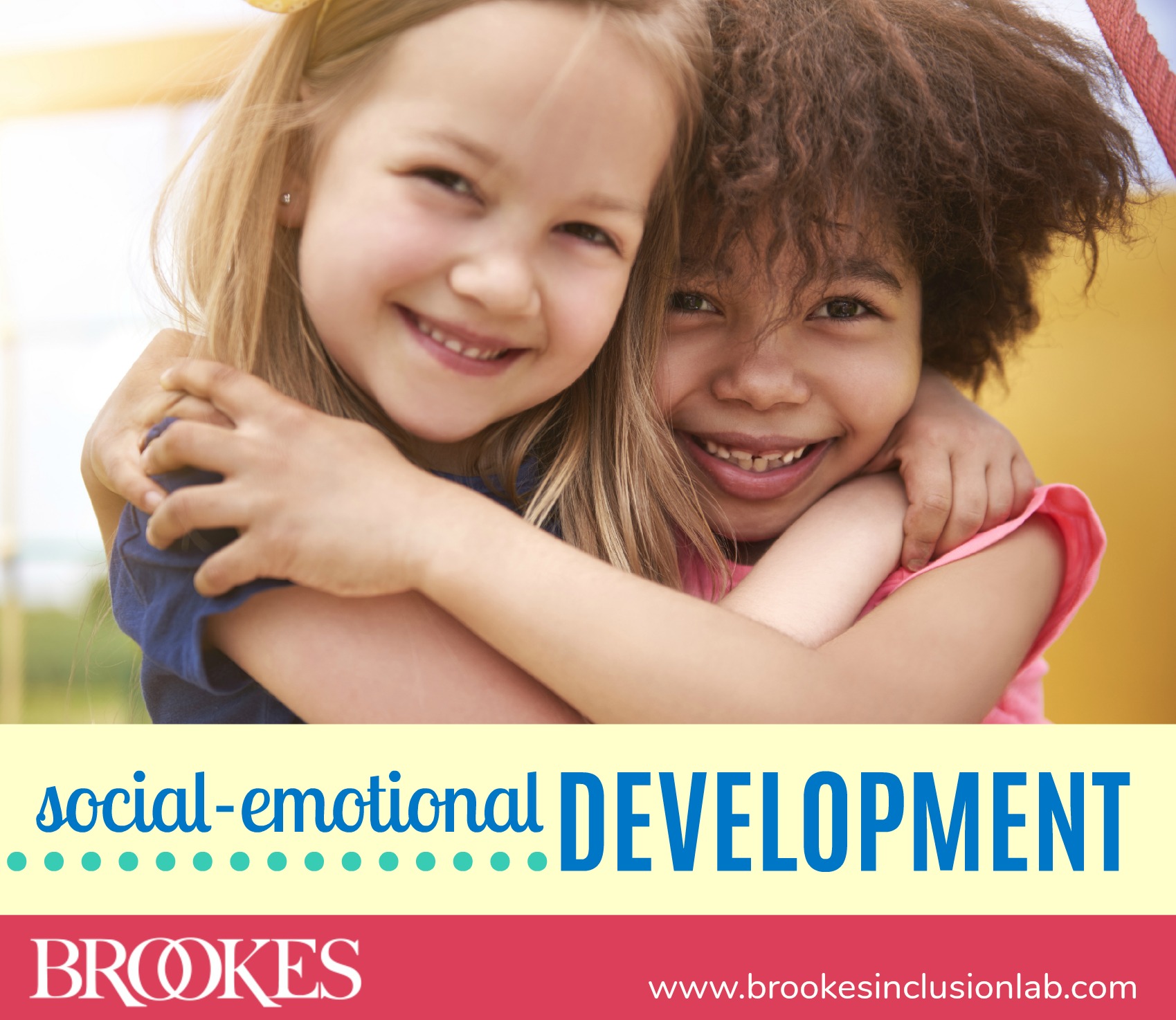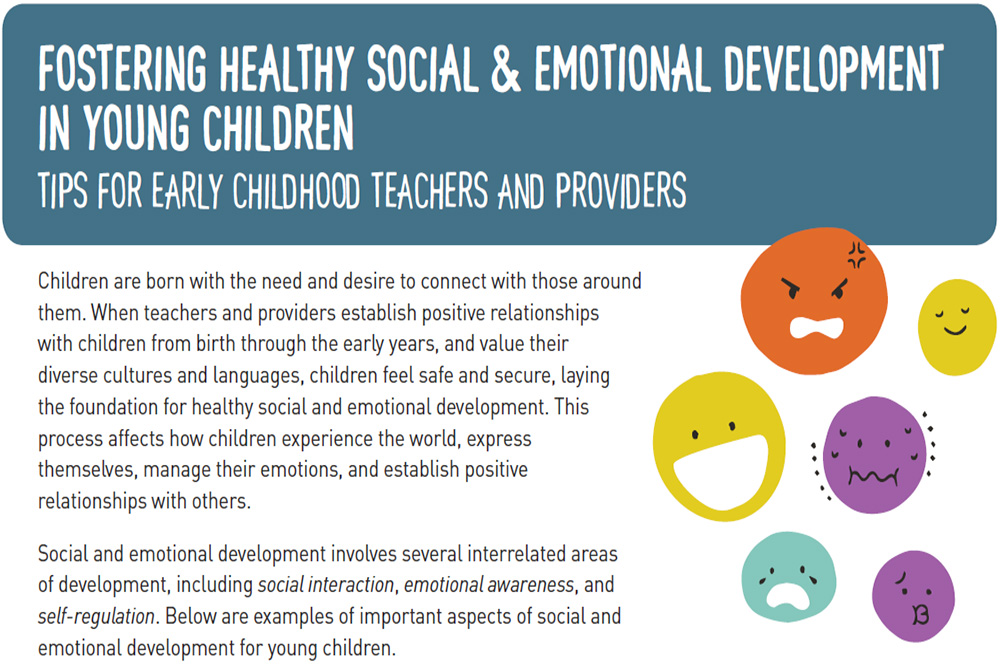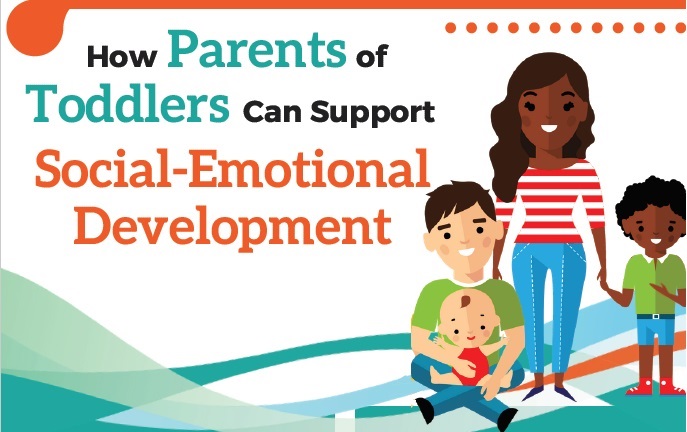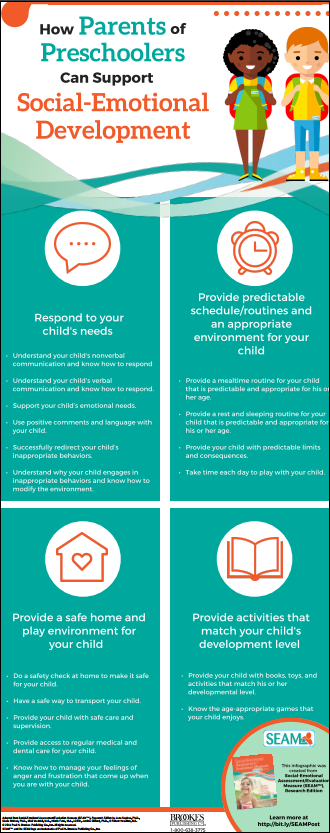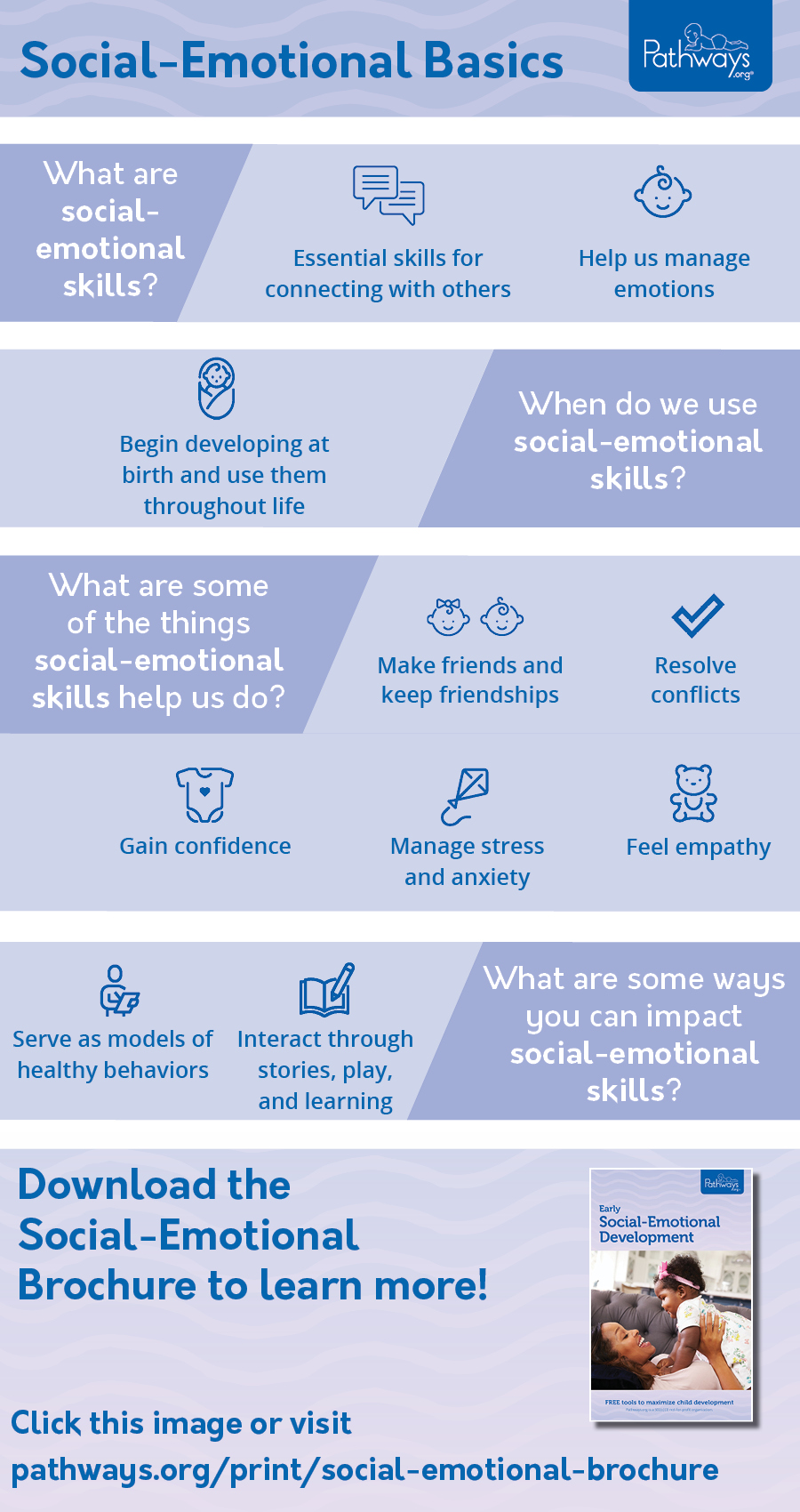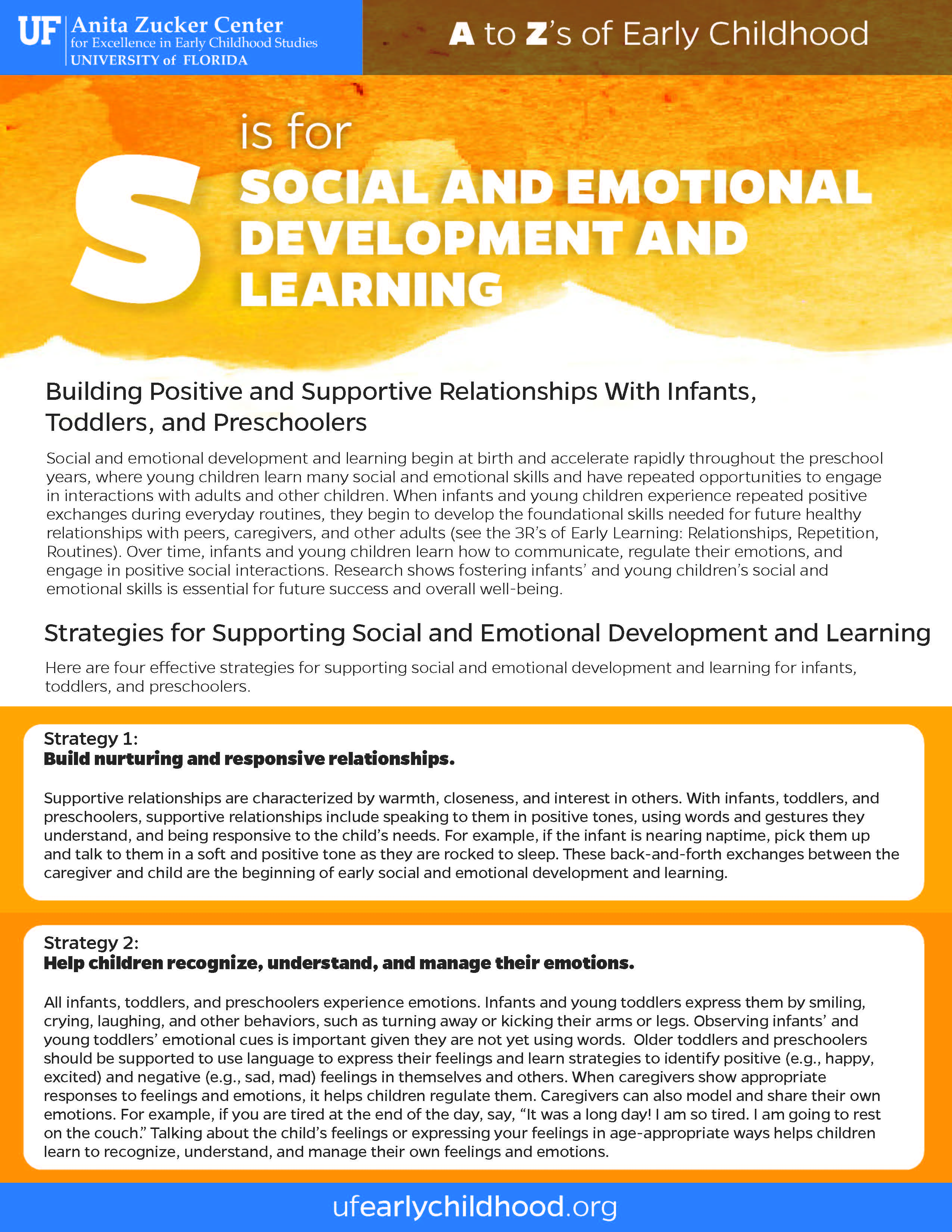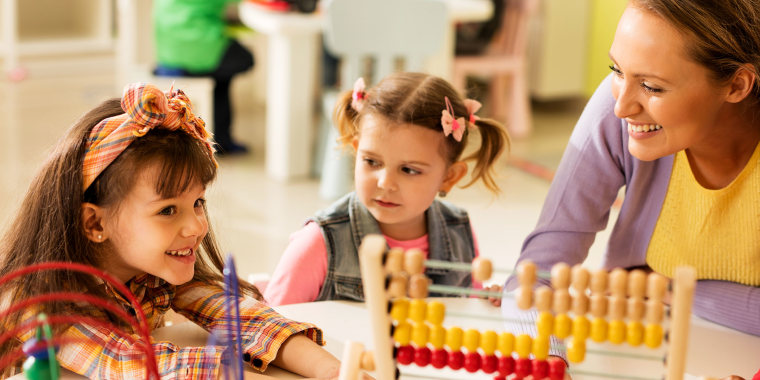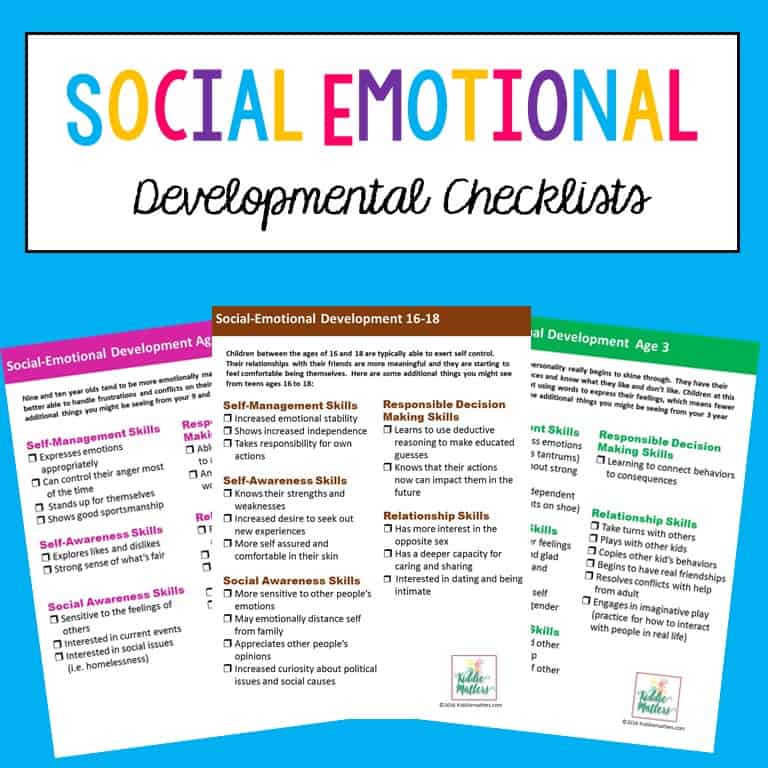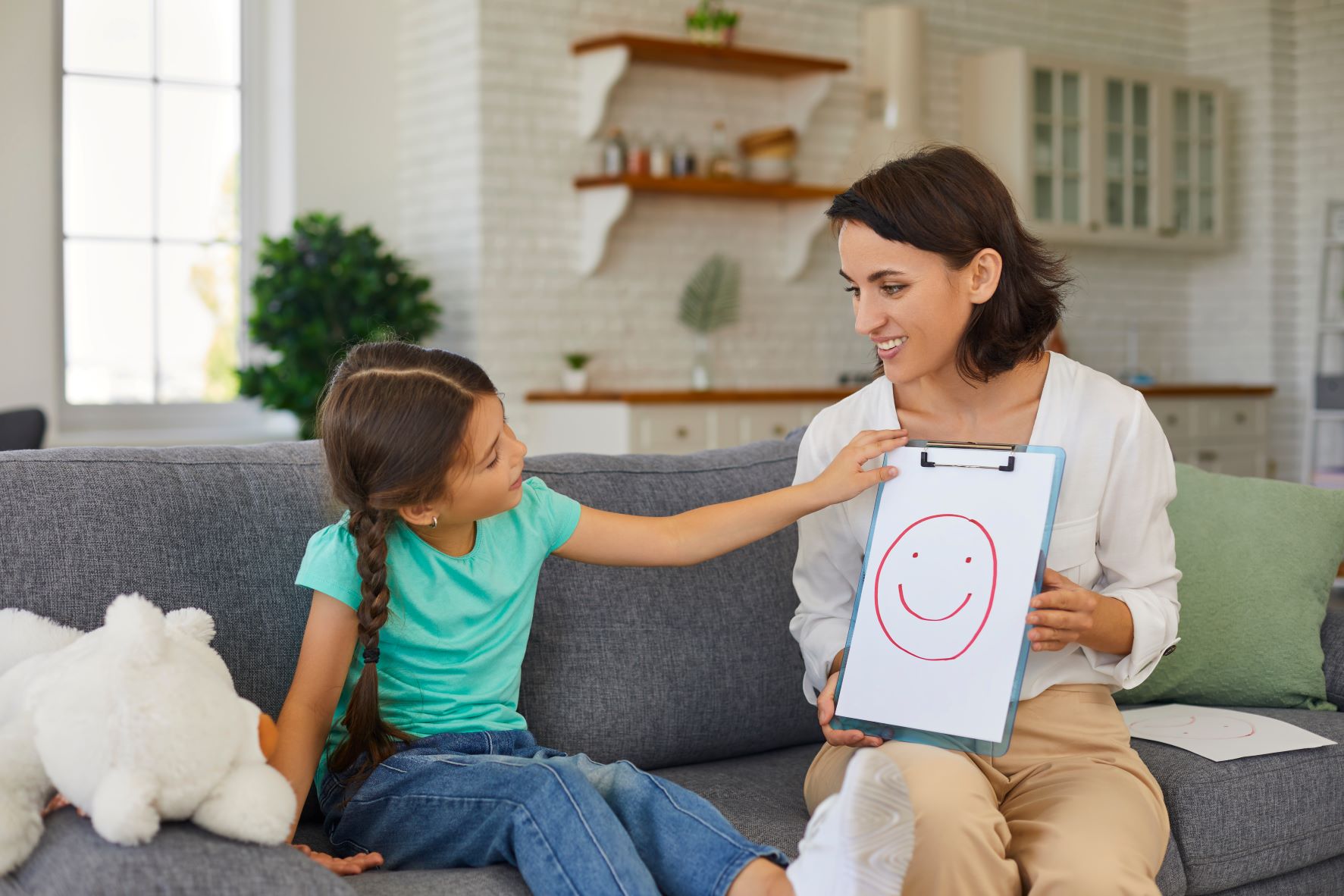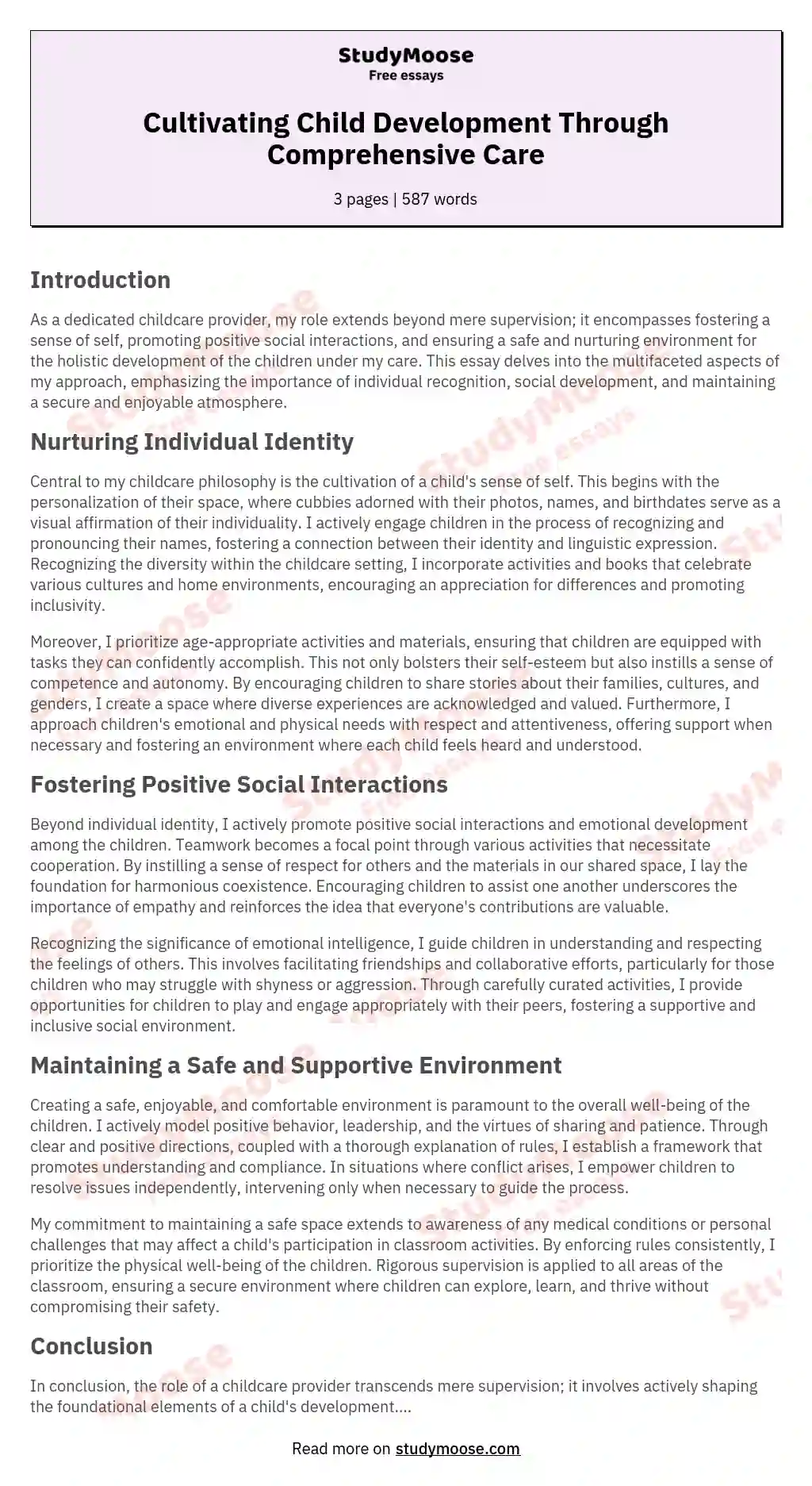Amazing Tips About How To Support Social And Emotional Development
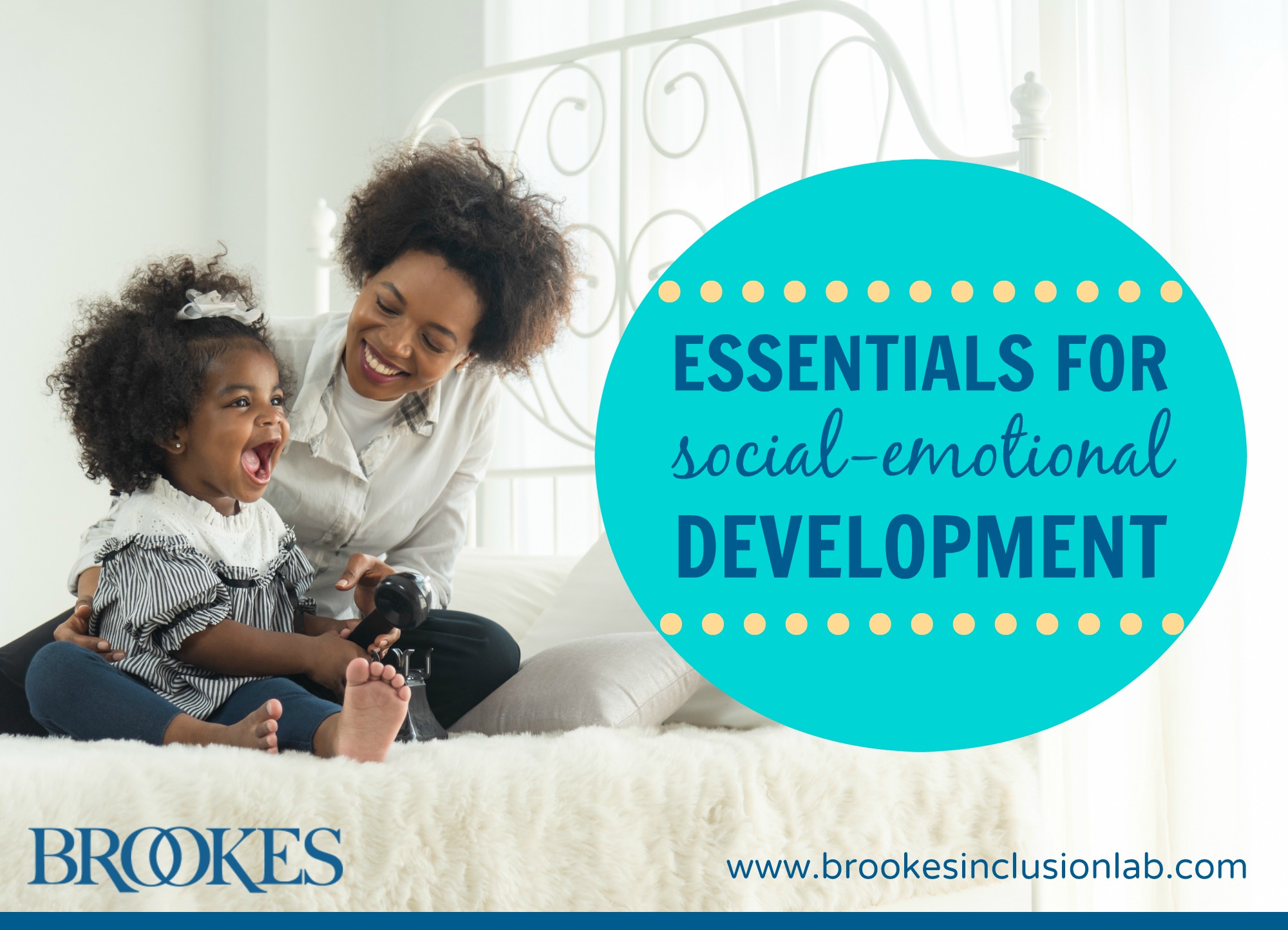
Young children who develop strong early relationships with parents, family,.
How to support social and emotional development. • lead by example, by modeling positive behaviors. Four of the main areas of growth in social and emotional development include: The ability of a young child to adjust and respond to a variety of situations, caregivers, and.
What can you as a caregiver do to support positive social and emotional development? One of the best ways to build children’s social and emotional skills is through enhancing their language and communication. The checklists contain development milestones in various areas, including social and emotional development, as well as activities to support emotional learning.
The relationship between children, their families, and other adults in their lives is critical to children’s healthy social and emotional development.1,2 beginning from birth, parents and. Research supports that talking to children about. Attachment is the emotional bond between a child and caregiver.
Also, i will express kindness and support for children when they’re having trouble. Use books to practice reading books to children can benefit them in more ways than one. To nurture your child’s social and emotional development, it is important that you actively engage in quality interactions like these on a daily basis, depending on the age of your child.
Controlling impulses, stress, and emotions. Give kids repeated opportunities to share and discuss their emotions (for instance, ask questions like “are you feeling sad that brianna took your toy?”), and be sure to verbally. We are also learning how to ignore the whining and not give in all the time.
There are 5 main components of social emotional learning: Besides the fact that this is a good way to bond with your child and an excellent strategy to put them to. There’s an old adage that you’ve no doubt heard, “it takes a village to raise a child.” while as parent you are your.


